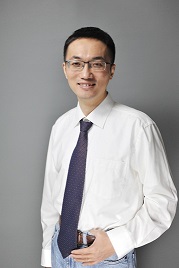Electromagnetic Sensing and Imaging
It is well known that electromagnetic waves can penetrate many kinds of materials. When illuminated by electromagnetic waves, different materials will respond differently. Therefore, electromagnetic physics provides us with an essential tool for sensing and imaging. We can infer the properties of the targets under investigation from the measured electromagnetic signal. Electromagnetic sensing has been applied to hydrocarbon production, land mine detection, and many other areas since the 1920s. However, due to the limit in computing powers, researchers can only interpret the domain of investigation by directly browsing the recorded signal. Reasonable interpretation requires ample experience, but it still needs to be more accurate. In the 1970s, computers were used in data processing, and algorithms were developed to estimate the electromagnetic properties of the investigation domain from the recorded survey data. During this time, inversion algorithms could only reconstruct simple one-dimensional models with tens of unknowns based on linear approximation. Still, even so, it took a long time to compute. These days, nonlinear inversion algorithms can reconstruct three-dimensional models with millions of unknowns on high-performance computing platforms. Many new electromagnetic sensing methods were developed with these developments, such as the widely used marine-controlled source electromagnetic surveys for hydrocarbon explorations, breast cancer detection using microwaves, etc. With the help of new sensors, big data technology, massive parallelization, fast algorithms, electromagnetic sensing, and imaging has improved their effectiveness and gained more and more applications.
In this talk, the presenter would like to discuss the fundamentals of electromagnetic sensing and imaging, the solution to electromagnetic inverse problems, and many practical examples from hydrocarbon exploration, radar imaging, biomedical diagnosis, non-destructive testing, etc. The presenter will discuss the challenges and new research directions for future electromagnetic sensing and imaging.
Date and Time
Location
Hosts
Registration
-
 Add Event to Calendar
Add Event to Calendar
Loading virtual attendance info...
- Contact Event Hosts
- Co-sponsored by STARaCom Montreal
Speakers
 Prof. Maokun Li
Prof. Maokun Li
Electromagnetic Sensing and Imaging (for general audience)
Biography:
Maokun Li is currently an associate professor in the Department of Electronic Engineering at Tsinghua University, a senior member of IEEE, and a fellow of the Applied Computational Electromagnetic Society. He received his B.S. degree in electronic engineering from Tsinghua University, Beijing, China, in 2002 and his M.S. and Ph.D. in electrical engineering from the University of Illinois at Urbana-Champaign in 2004 and 2007, respectively. After graduation, He joined Schlumberger-Doll Research as a research scientist. In 2014, he joined the department of electronic engineering at Tsinghua University. His research interests include fast algorithms in computational electromagnetics and electromagnetic inverse problems with applications to subsurface imaging. He has co-authored two book chapters, over 90 journal papers, and 150 conference proceedings. They have been cited more than 5000 times. He is an associate editor of IEEE Transactions on Antennas and Propagation and IEEE Transactions on Geoscience and Remote Sensing. He is also a member of the AP-S membership and benefits committee and serves as the IEEE AP-S Distinguished Lecturer (2023-2025). He received the 2017 IEEE Ulrich L. Rohde Innovative Conference Paper Award, the 2019 PIERS Young Scientist Award, and the 2021 Instructor Award for Excellent Ph.D. Thesis by China Education Society of Electronics.
Address:China

